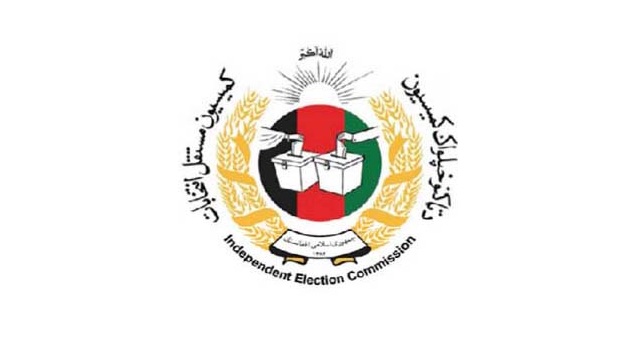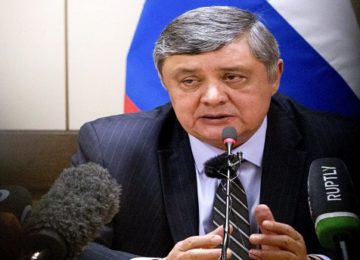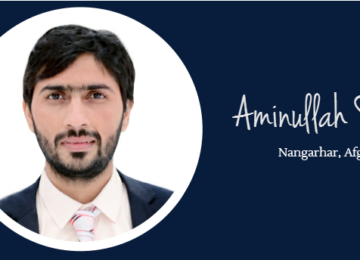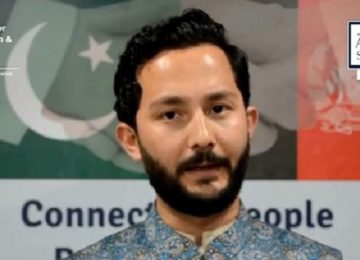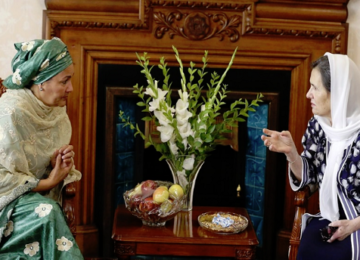The Independent Election Commission has set 20 October 2018 as the new date for Afghanistan’s parliamentary and district council elections. This comes after two earlier dates were missed. The Commission has also announced that it will start to register voters on Saturday, 14 April 2018. As AAN’s Ali Yawar Adili reports, though, the later date for the elections is problematic. Some areas could already be seeing heavy snowfall. It also means parliamentary and district elections would be held just seven months before the presidential poll is due, risking electoral congestion and political chaos.
Setting a fallback date for the elections
Afghanistan’s Independent Election Commission (IEC) has now postponed parliamentary and district council elections for a third time. On 1 April 2018, it announced “to the people” (see its statement in Dari here and English here) that both polls would be held on 28 Mizan 1397 (20 October 2018). (We continue to write ‘parliamentary and district council elections’ as both are still officially due to go ahead. However, preparations for district elections, including drawing constituency boundaries, remain rudimentary. If district elections do go ahead, it will be for the first time. They are politically important because, according to the constitution, district councillors should elect one third (34) of Meshrano Jirga (Senate) members and the heads of the district councils should participate in any Constitutional Loya Jirga. Such a jirga is required by the National Unity Government agreement and for any changes to the constitution. A future dispatch will look at the district elections in detail.)
During previous electoral cycles, early October had been considered the latest possible time for elections – they have never taken place later than 9 October. (1) Setting the date at the end of that month pushes the elections into a season where snowfall is possible in certain areas in the country. For example, there was snowfall in Bamyan in the first presidential election on 9 October 2004 and also in October 2013). Heavy snowfall would hinder access to polling sites for officials, observers and voters and add to the accessibility problems to the electorate caused by the insurgency. Snowfall disenfranchising voters in a politically weak province like Nuristan would be bad enough, but if it occurred inBadakhshan or Hazarajat, with their highly organised and politically and ethnically conscious voters, there could be real trouble.
The late date also pushes the parliamentary and district elections into the period when Afghanistan and its electoral institutions should be preparing for the next presidential poll. According to rules set by the constitution, Afghans should be electing their president 30 to 60 days before 1 Jawza 1398 or 22 May 2019 (meaning no later than 22 April 2019). This being the case, the new electoral timetable envisages Afghanistan holding two elections within seven months of each other, with the same electoral institutions busy both counting votes and addressing complaints and disputes arising from the first election, and making preparations for the second.
Tolonews on 5 April 2018 claimed to have obtained a copy of the electoral calendar, which the IEC chair said would be made public on 21 April 2018. Reportedly, it says that the IEC will announce the final list of parliamentary election results on 15 January 2019 and final district council results on 4 February. Yet, for the presidential elections, according to article 71 of the Electoral Law (Dari version available here), the IEC should announce the election date and publish the electoral calendar 180 and 120 days respectively before election day. This means that if the IEC is to hold presidential election on the constitutionally latest date, 22 April 2019, it has to announce the date of the election by 22 October 2018, two days after the parliamentary and district council elections are held, and publish the electoral calendar on 22 December 2018, before it has announced the results.
Even if Afghanistan’s electoral institutions were effective, technically able and politically non-controversial, the country’s weather was kind and predictable, and there was no insurgency, it would still be difficult to keep to this election time-table. Yet past experience has shown that in Afghan elections, little does go to plan even in the best of circumstances.
For example, iffinalising results (ie counting ballots and ranking candidates in order of the votes they received in each province) is protracted and especially if results are disputed, the impact on the presidential election could be dire. The experiences of earlier election cycles have shown that hiccups and delays should be expected. These have happened in public awareness campaigns, voter and candidates registration and procurement and transfer of election material (such as delays in printing ballot papers). It is also worth remembering that finalising the results of the last presidential election took more than five months from the first round election day. Disputes over winners and losers in the last parliamentary elections meant it took more than four months for a new parliament to be set up, with disputes rumbling on for almost a year.(2)
Exacerbating the looming election congestion are the continuing and as yet unfaced problems associated with holding district council elections. The IEC, the government and its international backers continue to insist that, this time, district council elections will be held. Holding district elections will require an operation far more massive than for the parliamentary poll, with the introduction and approval, after a probably more complex complaints procedure, of a much larger set of candidates.
As Yusuf Rashid, executive director of the observer organisation, Free and Fair Election Forum of Afghanistan (FEFA), alluded to in an interview with Etilaat Roz on 2 April 2018, the likely impact of delaying the parliamentary and district elections until October are either an eventual decision to hold them together with the presidential election in 2019, or a postponement of the presidential elections. A delay in the presidential poll, given the higher stakes – who runs the country – would potentially be more destabilising. This was hinted at by first deputy speaker of the Senate Muhammad Alam Ezadyar on 10 April 2018 when he said “the presidential elections must not be delayed under any circumstance.”
Elections already late
Yet these elections are long overdue. The term of the current lower house of parliament, the Wolesi Jirga, elected in 2010, expired on 22 June 2015. According to the constitution, the elections should have been held 30 to 60 days before then. By 20 October 2018, the current Wolesi Jirga will have served, extra-constitutionally, for almost three and half years.
This is the third time a date has been set for these elections. After several attempts by the IEC to set a date in 2015, it finally announced, on 18 January 2016, that elections would be held later that year on 15 October (24 Mizan 1395) (see AAN’s previous analysis here). The IEC was then in its former composition, that is to say, it comprised members who had overseen the disputed 2014 presidential elections.
Neither the government nor donors, however, took the October 2016 date seriously because most of the issues relating to electoral reform which Ashraf Ghani and Abdullah Abdullah (now the president and the chief executive, respectively) had promised to deal with when they formedthe National Unity Government remained unresolved. These issues included a demand for changes to the composition of both electoral commissions (the IEC and the Electoral Complaints Commission or ECC).
Then, on 22 June 2017, the IEC (in its new composition) announced a delay and set a new date for the elections, 7 July 2018 (16 Saratan 1397). However, as AAN wrote as early as November last year, the IEC had already come to the conclusion that this date was also unfeasible and was thus considering fallback dates as late as October 2018. The anticipated postponement was spawned by the great deal of time squandered debating President Ghani’s determination to introduce, not only biometric voter registration, but also electronic voting. In the end, the IEC’s unsuccessful procurement of this technology forced it to turn to a Plan B: a manual system for voter registration (see AAN’s previous reporting here). In its statement announcing the 20 October 2018 date, the IEC listed this as among the reasons for the delay. Other reasons included the appointment of a new IEC member (see AAN’s previous report on the controversies over this, here), insecurity and delays in getting assurances for the election budget from the government (and by extension, from the donors). (3)
Reactions to the new October date
While Afghan election observers such as FEFA’s Yusuf Rashid have been sceptical about the feasibility of the October election, various international parties have been more welcoming. The United Nations Assistance Mission in Afghanistan (UNAMA) in a statement released on 1 April 2018 welcomed what it called “the progress” made by the IEC in setting “a firm date for elections.” It said this was “a notably positive and important development in the work of the IEC, and will allow progress from the formal planning stages to implementation.” UNAMA had also called the earlier 7 July 2018 election date “realistic.”
European Union ambassador and head of delegation in Afghanistan Pierre Mayaudon also tweeted on 1 April 2018 that the 20 October date was now set and on that date elections which are “credible and with no further delay” must be held.
AAN has repeatedly heard from some members of the Kabul diplomatic community pushing to hold parliamentary and district council elections in 2018. However, the challenges are so formidable that other diplomats are questioning how realistic it is to expect an election in October, particularly one that is ‘inclusive’, ie where parts of the electorate are not excluded by weather or war. The challenges include unresolved issues surrounding electoral constituencies (see AAN’s report here and, most importantly, security constraints. As a forthcoming AAN dispatch will outline, the IEC has prepared a list of 7355 polling centres where voters will go to get registered and then cast their votes on election day. On 25 March 2018, senior Deputy Minister of Interior Murad Ali Murad gave a security assessment of those centres to the IEC. A little over half of them, 4,165 (56.6%), are in locations enjoying a ‘normal’ state of security, but the remaining 3,190 (43.4%), he said, were either in areas under medium or high threat, or completely outside government control.
Voter registration
The IEC has also announced that voter registration is to be launched this Saturday (14 April 2018) The need for fresh voter registration comes from the new provision in the 2016 Electoral Law (articles six and eight) that requires the IEC to prepare a voter list by tying each voter to a specific polling centre, ie a voter should only be allowed to vote in a polling centre where he or she is registered. The IEC provided the following basic information about voter registration to political parties and civil society organisations(also attended by the author) at a consultation meeting held on 6 December 2017. These are the steps to be followed.
Firstly, the IEC said the registration would be manual and the paper ID card (tazkera)would be used. A Memorandum of Understanding has been signed between the IEC and the Afghanistan Central Civil Registration Authority (ACCRA) to issue tazkerasto around ten million eligible voters who had not obtained them previously, starting from the month of Hamal (starting 21 March 2018).This was, in fact, the IEC’s Plan B. It had to be adopted after its Plan A, which had envisaged biometric voter registration, was dropped, according to the IEC deputy chair for operations Wasima Badghisi, because it “was not supported sufficiently by international organisations and the government of Afghanistan” (see AAN’s previous analysis on the debate about introducing technology in elections here. Article six of Electoral Law says that voters should be registered based on their tazkerasor other documents specified by the IEC (the law was cautious because some Afghans, especially women in rural areas, do not have tazkeras). However, in a decision made on 26 November 2017, the IEC specified that “only” tazkeras couldto be used for registration. The MoU with ACCRA to issue around ten million tazkerasis apparently meant to include and franchise those who do not yet have them.
Second, the IEC told the meeting that, upon completion of the voter registration and the preparation of the voter list, all previous voting cards would become invalid. There has been a highly inflated number of voter cards in circulation as the result of massive over-registration in the past: a total of 21 million voter cards have been distributed throughout the various registration and top-up exercises, for an estimated maximum total voting population of 15 million people (see AAN’s previous reports here and here. This had allowed multiple voting, among other forms of manipulation, helped by the lack of a reliable central register. This remains one of the major obstacles for holding credible elections.
Third, the IEC said that it would recruit and train more than 33,000 employees to conduct voter registration and there would be one ‘registration book’ allocated for each batch of 600 voters.
Fourth, the IEC said that around 7,350 polling centres (now increased to 7,366 – AAN dispatch on the polling centre assessment and list is forthcoming), which would include one female and one male polling station, would be activated across the country to serve as voter registration centres. It said female employees would be recruited to handle female polling stations. IEC chair Gula Jan Abdul Badi Sayyad told the Wolesi Jirga during a briefing about elections on 4 April 2018 that 12,000 staff had already been hired to carry out the first phase of voter registration and another 20,000 employees would be recruited for the second phase. However, the IEC seems to have been struggling to recruit female staff; on 10 April 2018, Shahla Haque, the acting head of the IEC’s secretariat, in a meeting with civil society organisations admitted that the lack of female employees was a problem. A day before, on 9 April 2018, IEC member Hafiz Hashimi, blamed the delay in hiring female employees for polling centres on the ministries of interior and women’s affairs for their supposed dilatoriness.
The registration centres are to be open every day of the week, including Fridays, from 8 o’clock in the morning to 4 o’clock in the afternoon. In an effort to reassure potential voters, the IEC said that each registration centre would have an “adequate number” of security forces available, a hint at the adverse security situation in many areas. They will be stationed outside the registration centres to ensure the security of buildings, material and employees.
As with the announcement of the new election date (20 October), the announcement that voter registration would be launched was welcomed by some interested actors, including British ambassador Nicholas Kay who, on 1 April, praised this step in an interview with the Kabul daily, Hasht-e Sobh. He said it was very important for two reasons:
First is that with the start of the voter registration, I think, we sense and observe signs of holding the election – which will be held after the end of voter registration. We sense that elections are on the verge of being held. Another important reason that the voter registration is of paramount importance will be having a voter list for the first time in Afghanistan.
The fact that the IEC has begun a public awareness campaign to inform voters about the registration, is also a sign that it is pushing to meet the 20 October date. A Facebook post on 28 March said the registration would be conducted in three phases, with the first starting on 25 Hamal 1397 or 14 April 2018 and the last finishing on 22 Jawza or 12 June. (4) Voter registration procedure, the IEC is telling the public, will be as follows:
- Each eligible individual will go to a registration centre with their tazkera. The voter’s information is recorded on the registration and confirmation forms. With this, each voter is tied to a specific polling centre.
- The registration confirmation is then separated from the form and labelled on the backside of the voter’s tazkera. The confirmation includes security codes such as a hologram and a specific number (which, the author thinks, will identify the individual voter).
- The voter is then asked to use the same tazkerato exercise their right to vote. (5)
- The registration forms are scanned and transferred to the national data centre.
- The scanned data is entered into the database by IEC employees and at the end of the voter registration process, the voter list will be developed for all polling centres and stations. What are known as the ‘registration books’ will be kept in the provincial offices of the IEC and used as a voter list if needed.
During the 6 December 2017 consultation meeting, the IEC had already listed some of the challenges it would face when registering voters and which could cause delays. These include the lack of security in some regions as a major concern; the possibility that paper tazkeraswere not, for any reason, distributed on time; the possible lack of cooperation by the security forces in transferring registration and election materials on time (a task often fulfilled in previous elections by international forces, they largely withdrew in 2014). The IEC also pointed out that the methods used to register voters this time will notprevent multiple registrations. It warned that if such cases were found, the perpetrators would be introduced to relevant authorities, but that was the case in earlier elections too, with little impact on vote-rigging. (According to the Electoral Law (article 98), registering more than once in the voters list is a violation for which a cash fine of between 12,000 and 50,000 afghanis will be imposed).
Conclusion: a messy dilemma
The Afghan government is the main party responsible for the mess is now finds itself in. Neither camp in the National Unity Government pushed for electoral reform immediately after they took office, as they had promised. Precious time was also wasted over the president’s ambitious, and some would say, fantastical, desire to introduce biometric voter registration and electronic voting. It was clear from the beginning that the introduction of this technology across the country was not feasible, given the many infrastructural weaknesses. However, the government overruled expert opinions and the recommendations of a number of feasibility studies, insisting, unrealistically, that the technology could be introduced. In the end, it had to accept that it could not be.
Those actors in the international community who have continued to stress that parliamentary and district elections must be held in 2018 in a largely still unreformed framework are also far from being free of blame. Some appear to be worried more about the appearance of a political process progressing ‘normally’ (despite the three years’ delay already in the parliamentary vote) than about qualitatively reliable elections. The repeated delays have already disrupted the practice of having regular, periodic elections, a requirement in normal democratic setting; international actors could have used their leverage to push for reforms earlier on.
Despite the many problems outlined here (and we will soon write about further aspects of election preparations still pending), it appears that the IEC is bent on trying to hold the elections in October 2018. Its launching of voter registration on 14 April will be a crucial step. However, it has yet to address several important questions, including:
Will the IEC be able to carry out voter registration, let alone the vote, in the large areas of the country controlled or threatened by the Taleban (and, to a much lesser extent, Islamic State of Khurasan Province or ISKP)? What will a possible failure to conduct the registration and voting in those areas mean for the inclusivity and thus legitimacy of the results, especially in multi-ethnic provinces like Ghazni)? How will the IEC deal with the possible impact of an early winter, especially on politically ‘heavyweight’ areas such as Badakhshan and the Hazarajat? If the date set for the election so late in the year does disenfranchise voters in snowy areas, what will that mean for the legitimacy of the elections and the results?
There is still no guarantee that it is possible to hold parliamentary and district elections in 2018. If they are held, there is also no guarantee that this would not lead to further political chaos. At the same time, more delays to parliamentary and district elections would be dangerous to the legitimacy of the current government and parliament.
At this stage, the alternative course of action would be to sort out the electoral framework first and then schedule the elections. Parliamentary and district, and parliamentary elections could still be held separately, although a knock-on delay to the presidential elections would then seem inevitable. It would then be the National Unity Government lingering in power beyond its constitutional mandated term. All in all, holding all the polls together in 2019 might now be the most practical and least bad option.
By Special Arrangement with AAN. Original link.
Disclaimer: Views expressed on this blog are not necessarily endorsed or supported by the Center for Research and Security Studies, Islamabad.



